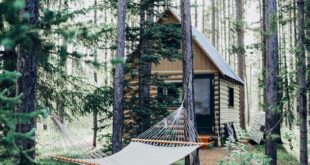Imagine your garden from above – a painting in a green frame and everything is alive. Hedge, besides being beautiful decoration of your fence, it is extremely functional in terms of accessibility from unwanted guests. It is difficult surmountable obstacle for people and animals. If you think that it is very difficult for maintenance – it is not. You need only willingness and some advices from experts. But the beauty that can be achieved with hedges is worthed every second spent doing it. You can create miraculous forms on the fence with ordinary scissors and make it unique in its own way. The manifestation of creativity adds extra pleasure, but if you do not know how to do it, there are people who will do it for you and can create beautiful forms and shapes.

With hedge it is possible to make a maze if your yard allows it and create exceptional comfort by taking different parts according to their purpose.
Once planted, the hedge does not require much care and money.
From what plants we can make hedge?
There are over 500 species of evergreen and deciduous plants suitable for hedges, which can also be combined with each other.
The most commonly used shrubs are Bird grapes and Thuja.
Bird grapes is the most often used for hedge. It is not evergreen and in winter its branches bare. If you want evergreen hedges, Thuja is more suitable.
Most spectacular and sophisticated your hedges will become, if you plant a Japanese ligustrum. It is evergreen and grows quickly. It is also very flexible, and its leaves are round and brilliant – very handsome. Another advantage of Japanese ligustrum is that it grows well under shades. It is very easy to form figures, because it’s plastic and amenable to trimming.

Japanese ligustrum does not need special care, with the exception that it is more suitable for sandy soil. Planting is best done in the autumn October – November in order for the development to begin in early spring and use accumulated in soil moisture. It will be able to develop its root system and be resistant to summer heat and droughts.
Planting must be done in two lines and the roots staggered for greater density. When they are closer to each other, they endure in winter and very low temperatures.

Trimming a hedge must be done 3 times a year – the first time in February, the second – in June and the third – early September. If you want to have a nice hedge, you must do it and not leave more than 5-7 cm from the previous growth of the plant. Normal growth rate for 1 year should be 15-20 cm to make sure that your hedge will not get thinner.

Boxwood is also a good choice for hedge, because it is easy for maintenance and shaping. Its height can be controlled by yourself as you can trim it low for a small decorative fence or leave it to grow in a green living wall. Boxwood is a shrub with evergreen leaves that are not fickle and easily grown. The flowers are pale yellow and matte bitter flavor, which in warm weather is pretty strong. The leaves are small, dark green and shiny and are also fragrant.

Hedge becomes very interesting when combined various shrubs in different leaves color. But most importantly to make your hedges dense and beautiful, you need to know that the first pruning is required to be made no earlier than one year after being planted and it should be done low – about 10 cm from the soil. It is important to allow the root system to grow stronger. Its height should be increased steadily after the first pruning up to 50-60 cm, and in the coming years trimmed in half the annual growth. Do not allow the soil to dry.

 Happy at Home Family Problems & Solutions | Home & Health Tips
Happy at Home Family Problems & Solutions | Home & Health Tips







